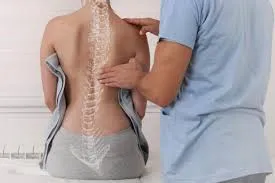How Spinal Stenosis Can Affect Your Mobility and Quality of Life

Mobility is a key part of independence and quality of life for any individual. Spinal stenosis, a condition affecting the spinal canal, can greatly hinder this. Though common, this condition often causes discomfort, mobility issues, and disrupts daily activities. Understanding the condition, its symptoms, and treatments is the first step to managing its effects.
What Is Spinal Stenosis?
Spinal stenosis occurs when the spaces within your spine narrow, putting pressure on the spinal cord or nerves. This condition typically develops over time, often due to age-related changes in the spine. While it can occur in any part of the spine, it is most often seen in the neck (cervical stenosis) or lower back (lumbar stenosis).
Degenerative changes, such as those caused by arthritis, contribute to this condition. Thickened ligaments, herniated discs, or bone spurs can also play a role. While some people may have a naturally smaller spinal canal, stenosis is typically a result of gradual wear and tear on the spine.
What Are the Symptoms and Causes of This Condition?
Symptoms of spinal stenosis vary depending on its location and severity. Many people experience pain or discomfort in the affected area, with the lower back and legs being common problem zones in lumbar stenosis. Those with cervical stenosis may notice neck pain, numbness, or tingling in the arms and hands. Weakness in the limbs or difficulty walking can also occur, impacting the ability to move freely.
The condition is often caused by age-related factors, including the natural degeneration of the spine. Osteoarthritis and rheumatoid arthritis are common culprits due to their impact on the joints. Other causes include ligament thickening, which can reduce space in the spinal canal, and conditions like herniated discs, which may bulge into the spinal canal and compress nearby nerves.
Physical trauma or injuries to the spine can also lead to spinal stenosis. These injuries may accelerate the narrowing process or disrupt the structure of the spine. Some individuals may have congenital spinal stenosis, meaning they were born with a narrower spinal canal, which can predispose them to symptoms later in life.
How Is It Treated?
Treatment for spinal stenosis varies depending on its severity and the specific needs of each individual. Nonsteroidal anti-inflammatory drugs (NSAIDs) are often used to manage pain and inflammation. These medications can help reduce the discomfort associated with nerve pressure and allow for greater mobility.
Physical therapy is a common approach to managing mobility concerns. Therapeutic cervical traction may also be recommended in cases of cervical stenosis to alleviate pressure on the affected nerves. Chiropractic care is another non-invasive option for some individuals. Adjustments and spinal manipulation aim to restore proper alignment and improve mobility without the need for more invasive interventions.
For severe cases, surgery may become an option. Procedures such as laminectomy or spinal fusion can create more space within the spinal canal and relieve nerve compression. While surgery carries risks, it is often an effective solution for individuals whose symptoms greatly impact their quality of life.
Take Control of Your Spine
Living with spinal stenosis can be challenging, but understanding its effects and treatment options can make a meaningful difference. By exploring non-invasive therapies or consulting healthcare providers about surgical interventions, individuals can reclaim mobility and ease discomfort. Schedule a consultation with a spine care specialist to learn more about managing this condition and treatment possibilities. Taking proactive steps can help you maintain the active, fulfilling lifestyle you deserve.





